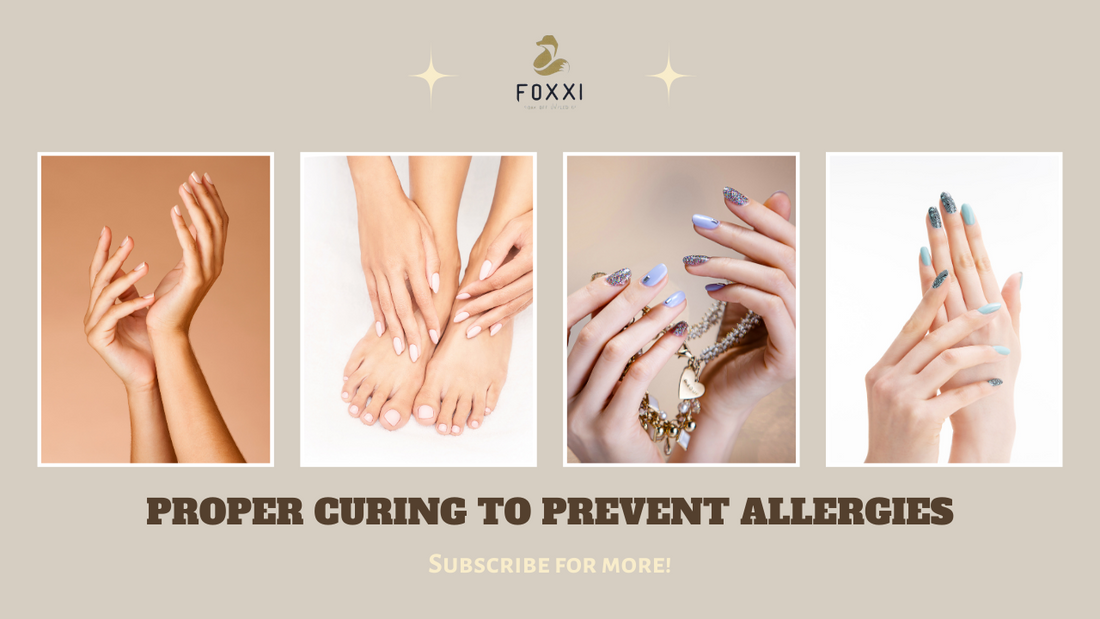As gel nail polishes continue to gain popularity for their long-lasting and durable finish, it's important to highlight the significance of proper curing techniques in preventing nail product allergies. Improper curing of gel polishes can lead to a range of issues, including skin sensitivities and allergic reactions. Let's explore the key steps you can take to ensure that your gel manicures are cured correctly to safeguard against nail product allergies.
Understanding Gel Polish Curing:
Curing is the process of hardening gel nail polishes using an LED or UV lamp. Proper curing is essential for ensuring that the gel polish adheres securely to the nail and maintains its longevity. Incomplete curing can result in soft, sticky, or peeling nails, which may lead to skin irritations and allergic reactions when the uncured gel comes into contact with the skin, and when the monomer molecules, which are very small, work through the nail plate, onto the nail bed, irritating the skin and causing onycholysis.
Tips for Proper Gel Polish Curing:
1. Use the Right Lamp: Ensure that you are using a high-quality LED or CFL UV lamp that is compatible with the gel polish you are using. Different gel polishes require specific curing times and wavelengths, so it's essential to follow the manufacturer's instructions for optimal results. Foxxi & Bestie Gel polishes cure under most curing lamps, but times may vary, so a test is required to ascertain the right amount of time for your lamp.
2. Follow Curing Guidelines: Pay attention to the recommended curing times provided by the gel polish manufacturer. Undercuring can impact the adhesion and durability of the manicure, potentially leading to allergic reactions if the gel remains uncured.
3. Apply Thin Layers: To facilitate proper curing, apply gel polish in thin, even layers. Thick layers of gel polish can hinder the penetration of light from the lamp, resulting in incomplete curing and increased risk of allergies.
4. Avoid Skin Contact: Take care to avoid getting uncured gel polish on the skin surrounding the nails during application. Any gel residue left on the skin can trigger sensitivities and allergic reactions upon exposure to UV light during curing.
5. Moisturize and Protect: After curing, moisturize the skin around the nails to replenish hydration and create a barrier between the cured gel polish and the skin. This extra step can help prevent skin irritations and allergic reactions.
By following these tips for proper gel polish curing, you can minimize the risk of nail product allergies and enjoy beautiful, long-lasting gel manicures without compromising your skin health. Remember that investing time in mastering the art of curing can go a long way in ensuring a safe and enjoyable gel nail experience for yourself and your clients.

